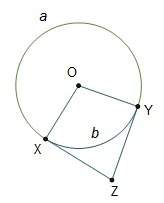
Mathematics, 26.06.2019 00:00 EinsteinBro
1. you have no debt and $2,000 in your savings account. on your current budget, you figure that you can save an additional $2,000 each year. you want to put your money to work. calculate the return on each of the investment options described below. a. continue putting your money into your savings account, which earns an annual interest rate of 3 percent. what will be the balance of your savings account at the end of 10 years, and how much interest will you have earned? savings balance: interest earned: b. put your savings and the extra $2,000 into a mutual fund that earns 8 percent annually. if you reinvest your profits each year (earning compound interest), how much will you have in the mutual fund at the end of 10 years, and how much interest will you have earned? total in mutual fund: interest earned: c. leave half of your $2,000 in savings, and invest the other half in the stock market. do the same each year, putting $1,000 in stocks and the other $1,000 in savings. you earn 3 percent on your savings account and 10 percent on your stock investments. how much will you have earned from your savings account after 10 years? how much will you have earned from your stock investments after 10 years? how much money will you have between your savings account and your stocks combined after 10 years? money earned from savings account: money earned from stock market: total money: 2. your family gives you $5,000 as a college graduation present. you are about to start paying off $50,000 in student loans at a 4 percent interest rate for a 15-year loan. you could use this money to pay some of your loans, but you could also invest it. a. calculate the monthly payments and total payment you will be making on your loan if you do not use the $5,000 to make an initial payment. monthly payment: total amount paid: b. calculate the monthly payments and total payment you will be making on your loan if you do use the $5,000 to make an initial payment. monthly payment: total amount paid: c. list two ways you could invest the money, and describe the expected returns from each method over a 15-year period. d. what would you do with the $5,000? explain why your choice makes financial sense to you.

Answers: 1


Other questions on the subject: Mathematics

Mathematics, 21.06.2019 15:40, tylorroundy
Given the following sampling distribution of one mean with a sample size 49, from a normally distributed population, find the population standard deviation, o.79828588912497
Answers: 3

Mathematics, 21.06.2019 17:00, michibabiee
Sole with work in 10 years, the average number of hours of tv watched per week by teenagers dropped from 23.9 to 21.4. find the percent of change.
Answers: 1

You know the right answer?
1. you have no debt and $2,000 in your savings account. on your current budget, you figure that you...
Questions in other subjects:

Mathematics, 16.04.2020 00:50



Social Studies, 16.04.2020 00:50




English, 16.04.2020 00:50

History, 16.04.2020 00:50

 (a) Saving balance = $20,600
(a) Saving balance = $20,600




